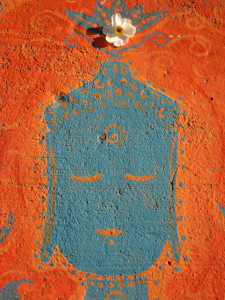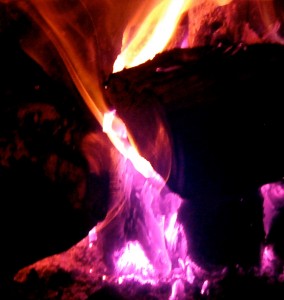
– Photo by Chuck Ketchel
It’s 6:21 AM. I’m driving slowly along the windy hilly roads to work. My mind is preoccupied with the experience Jan and I had last Friday at the VA Hospital in Albany. We’d been invited to present on PTSD. We decided to give an experiential presentation for which I’d brought my EMDR light bar. There was a delay getting into the conference room, as a prior meeting was spilling over into our time. Our presentation time was compromised, as another presenter was to follow immediately after us.
Once we finally entered the room, I quickly attempted to set up the equipment. Suddenly we entered a cartoon-like dream. Everything we touched, although meticulously packed, fell apart. The tripod literally fell into pieces, impossible to reassemble.
“Okay,” I resolve, “I’ll hold the light bar without the stand.” As I go to clip the control switch into the bar I discover that the clip is broken. There is no salvaging the equipment now! That’s it, I decide, the trickster shaman’s world trumps. The Magical Breathing Pass of Recapitulation will have to be the main experiential feature. And so, about 25 people learned and experienced this ancient Magical Pass and it’s application to PTSD.
As I continue to drive to work, I recall that the time crunch of the presentation also precluded a brief group hypnosis that Jan was to give at the close of the talk. Suddenly, my awareness is abruptly drawn back to the present moment: a young deer is staring at me, frozen in the road. I slam on the brakes—a near miss!

What does it all mean? For the past several days, I’ve been experiencing and observing opposition and retrograde. We exist and are composed of fields of competing energies. Mercury, the trickster energy, is indeed in retrograde. At the VA we experienced the ancient shamanic energy opposing and trumping the modern mechanical/technological world. At the moment I recalled the opposition of time and trance—no time for a group hypnosis—I was awoken from my own highway hypnosis to not kill a deer. Here was the opposition of time and timelessness: being present in this moment to not kill a deer vs being lost in the timeless world of the mind’s meanderings.
We all struggle with oppositions within the self. Carlos Castaneda relates in Magical Passes how don Juan Matus explained this in a metaphorical sense: “…that we are composed of a number of single nations: the nation of the lungs, the nation of the heart, the nation of the kidneys, and so on. Each of these nations sometimes works independently of the others, but at the moment of death, all of them are unified into one single entity.” (pp. 103-4)
Our challenge in this life is to reconcile those oppositions within us, the trickster included, into an integrated whole, in a process that Jung termed individuation.
Sometimes the nation of the stomach craves that which the other nations of the body reject. Sometimes the neocortex—our rational brain—rejects the impulses and needs of our limbic system—our animal brain.
When my neocortex confronted the frozen limbic response of the deer in my headlights, it managed to direct my body to hit the brakes. My own limbic system worked in concert with my neocortex to supply the rapid response to react physically to the crises at hand. This is an optimal response—nations of the self unified, acting in concert.
In times of retrograde, Mercury, the trickster, can confound all attempts at collaboration. Mercury laughed as I fumbled with the equipment at the VA. Rather than fight, I read the signs and immediately shifted. Acquiescing, I flowed with the energy of the moment and instead taught deep bodily knowledge.

When I asked the I Ching for guidance regarding this period of retrograde, it once again, not surprisingly, produced the hexagram of Opposition, #38. The moving lines—in the third and fourth places—depicted a wagon with oxen being dragged backwards. Now there’s a retrograde image! The guidance reads: though humiliation might occur, sit tight, wait, align with a likeminded person who can be trusted. In the case of the faulty light bar, I turned to my neocortex, which acted in concert with spirit: Go with the flow, trust the Magical Pass.
In shaman’s terms, the guidance is to suspend judgment, to look beyond the impasse. Reconciliation lies in the deeper meaning of the trickster’s intent—to reveal a deeper truth: The ancient Magical Pass of Recapitulation is all you need to be freed of PTSD.
We can reconcile with all our retrograde energies if we accept their opposition with patience and perseverance, not falling for the trap of self-blame. The deeper meaning of Mercury’s retrograde lies in the wings of Mercury—our freedom to fly—achievable if we don’t get caught in the heaviness of opposition.
Flowing on the wings of Mercury,
Chuck









